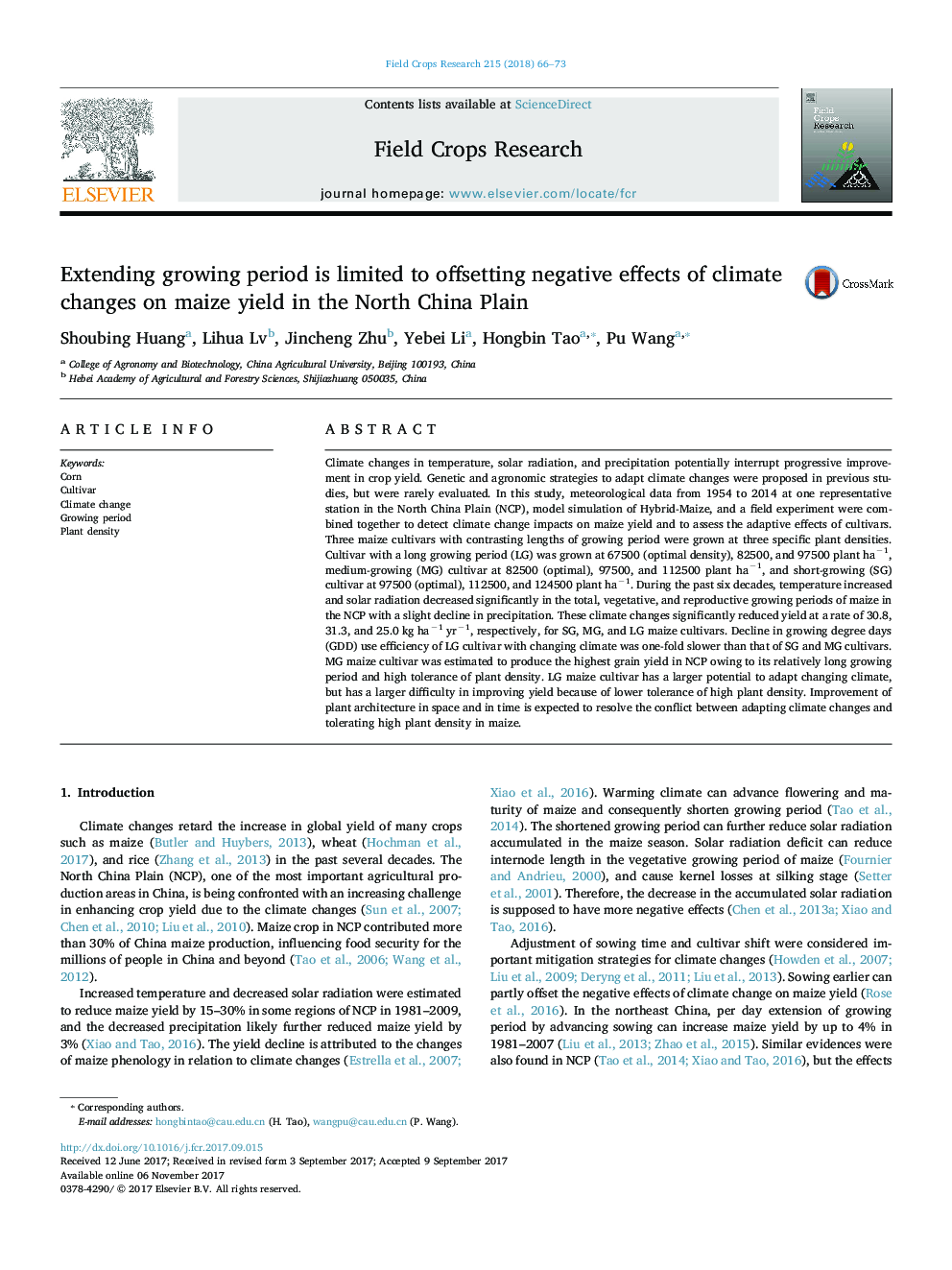| کد مقاله | کد نشریه | سال انتشار | مقاله انگلیسی | نسخه تمام متن |
|---|---|---|---|---|
| 8879450 | 1624648 | 2018 | 8 صفحه PDF | دانلود رایگان |
عنوان انگلیسی مقاله ISI
Extending growing period is limited to offsetting negative effects of climate changes on maize yield in the North China Plain
ترجمه فارسی عنوان
گسترش دوره رشد محدود به جبران اثر منفی تغییرات آب و هوایی در عملکرد ذرت در دشت شمال چین
دانلود مقاله + سفارش ترجمه
دانلود مقاله ISI انگلیسی
رایگان برای ایرانیان
کلمات کلیدی
ذرت، ارقام، تغییر آب و هوا، دوره رشد، تراکم گیاه
موضوعات مرتبط
علوم زیستی و بیوفناوری
علوم کشاورزی و بیولوژیک
علوم زراعت و اصلاح نباتات
چکیده انگلیسی
Climate changes in temperature, solar radiation, and precipitation potentially interrupt progressive improvement in crop yield. Genetic and agronomic strategies to adapt climate changes were proposed in previous studies, but were rarely evaluated. In this study, meteorological data from 1954 to 2014 at one representative station in the North China Plain (NCP), model simulation of Hybrid-Maize, and a field experiment were combined together to detect climate change impacts on maize yield and to assess the adaptive effects of cultivars. Three maize cultivars with contrasting lengths of growing period were grown at three specific plant densities. Cultivar with a long growing period (LG) was grown at 67500 (optimal density), 82500, and 97500 plant haâ1, medium-growing (MG) cultivar at 82500 (optimal), 97500, and 112500 plant haâ1, and short-growing (SG) cultivar at 97500 (optimal), 112500, and 124500 plant haâ1. During the past six decades, temperature increased and solar radiation decreased significantly in the total, vegetative, and reproductive growing periods of maize in the NCP with a slight decline in precipitation. These climate changes significantly reduced yield at a rate of 30.8, 31.3, and 25.0 kg haâ1 yrâ1, respectively, for SG, MG, and LG maize cultivars. Decline in growing degree days (GDD) use efficiency of LG cultivar with changing climate was one-fold slower than that of SG and MG cultivars. MG maize cultivar was estimated to produce the highest grain yield in NCP owing to its relatively long growing period and high tolerance of plant density. LG maize cultivar has a larger potential to adapt changing climate, but has a larger difficulty in improving yield because of lower tolerance of high plant density. Improvement of plant architecture in space and in time is expected to resolve the conflict between adapting climate changes and tolerating high plant density in maize.
ناشر
Database: Elsevier - ScienceDirect (ساینس دایرکت)
Journal: Field Crops Research - Volume 215, January 2018, Pages 66-73
Journal: Field Crops Research - Volume 215, January 2018, Pages 66-73
نویسندگان
Shoubing Huang, Lihua Lv, Jincheng Zhu, Yebei Li, Hongbin Tao, Pu Wang,
